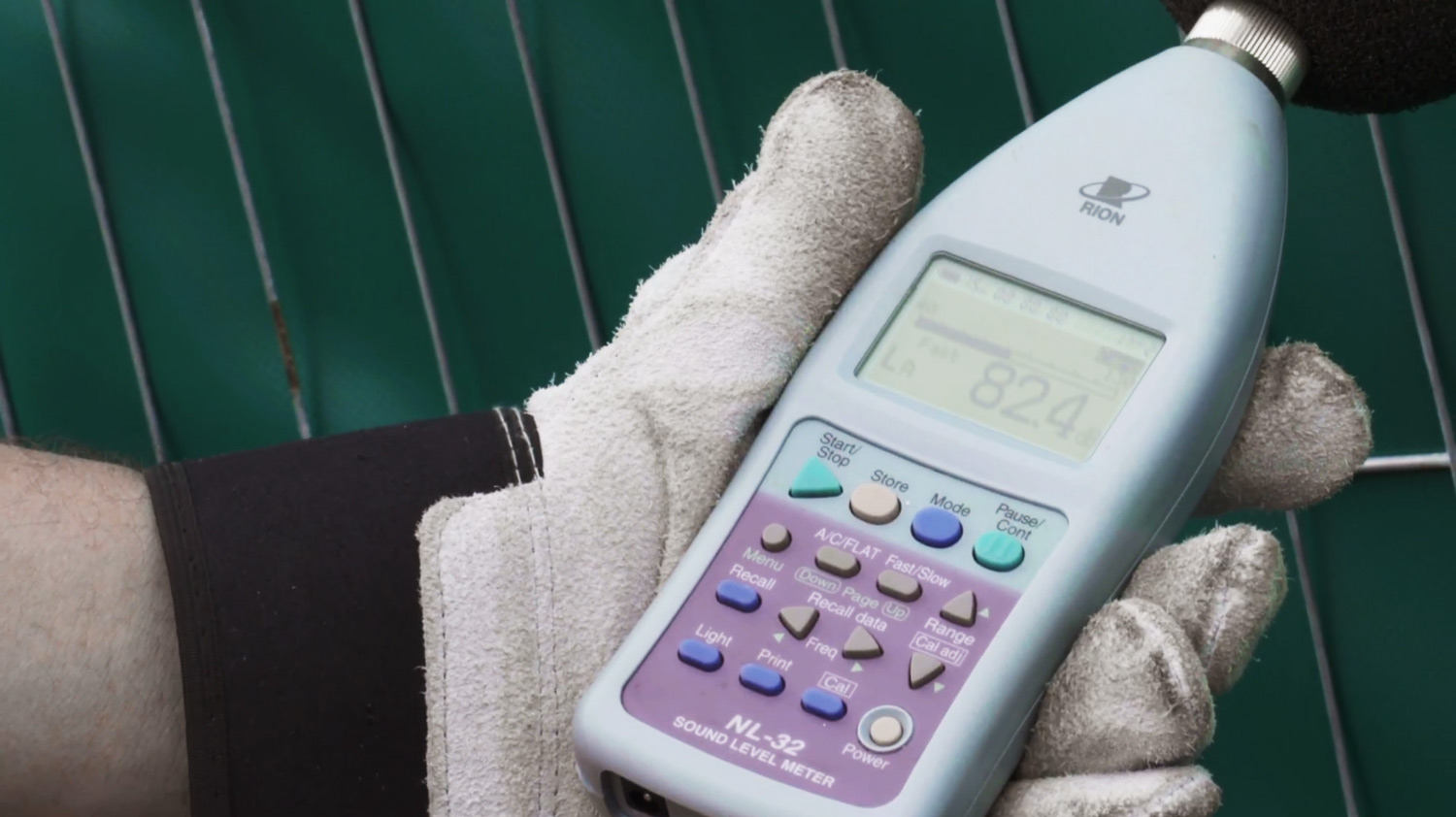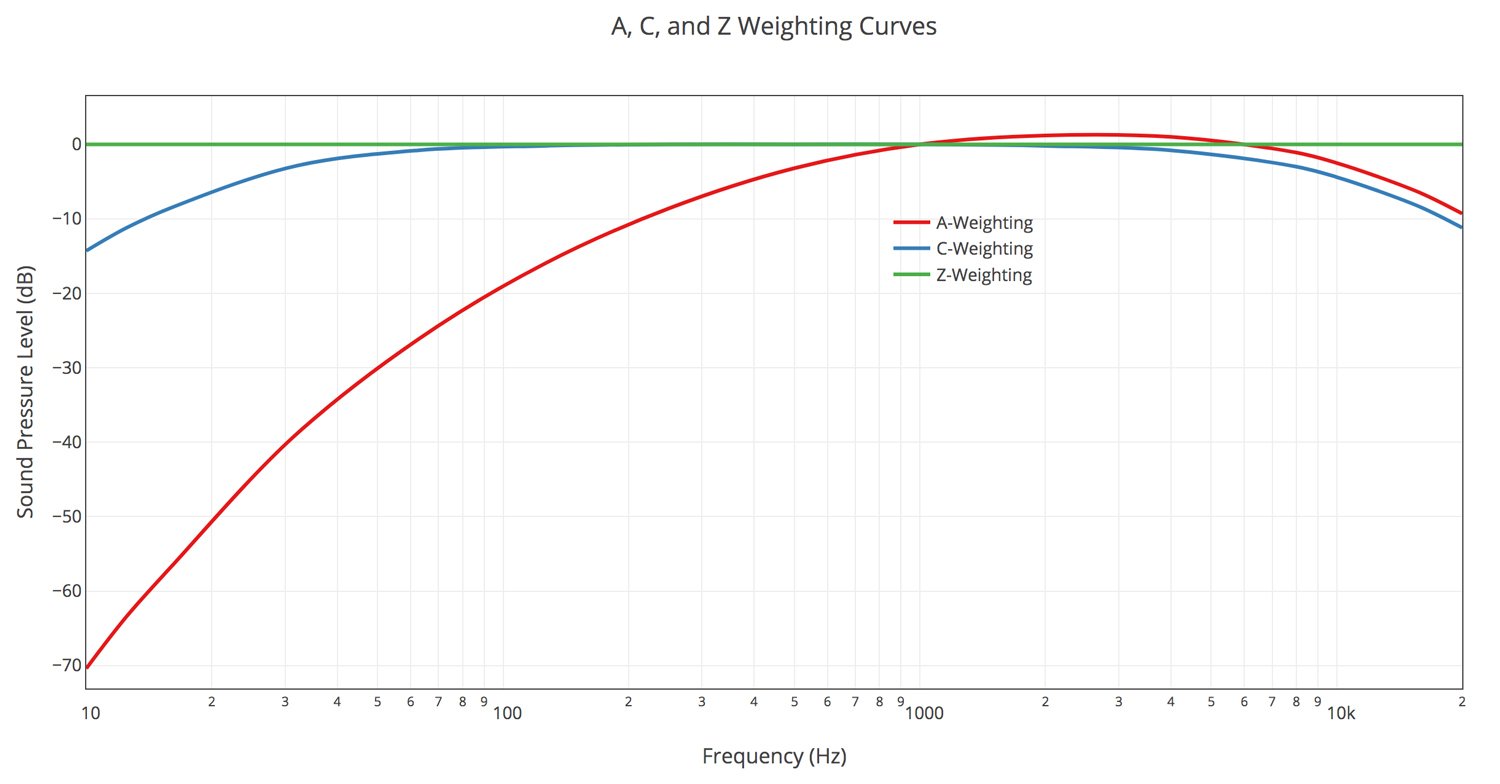
Frequency weightings allow us to adjust decibel readings taken by noise-measuring instruments in order to more accurately reflect the true noise level as perceived by humans.
A, B, and Z weightings are examples of the types filters that are applied to adjust noise readings across the full acoustic spectrum (20 Hz to 20,000 Hz), resulting in slightly different measurements based on the desired aim.
A Little On Acoustics
We measure sound energy with several units, including amplitude (loudness) and frequency (change in wave direction). Frequency is measured in hertz, Hz, named for the German physicist who studied sound.
The higher the frequency, the more sound waves pass your ear in a given time. High frequency sounds like whistles, sirens, and birds chirping contrast with low frequency sounds like thunder booming and trucks rumbling down a road.
Not All Frequencies Are Heard Equally
Although two sounds sound may be read as equal in decibels, the human ear will interpret their loudness distinctly, based on where they lie on the frequency spectrum.
The sensitivity of human hearing is demonstrated by the Fletcher-Munson equal-loudness contours.

In order to more accurately read noise in accordance with the human response to noise stimuli, sound level meters apply electronic filters to give greater importance – or weighting – to different frequency ranges.
Two of the most common filters, A and C, are human-weighted; the 'Z' weighting is more or less a control.

Each filter has a different degree and kind of noise level attenuation.
'A' Frequency Weighting
The 'A' frequency weighting is the most common, as it is designed to most closely match the inverse of the equal loudness curves, in order to more accurately . In fact, according to the international standard IEC 61672, it is mandated to be fitted to all sound level meters.
You can identify an A-weighted frequency measurements as dB(A), or by labels like LAeq, LAFmax, and LAE.
C Frequency Weighting
'C' frequency weighting is the standard weighting of audible frequencies typical with measurements of Peak Sound Pressure level.
This frequency weighting tracks human hearing just as the 'A' frequency weighting, but at higher noise levels (greater amplitude). The flatter curve emphasizes the effects of lower frequency sounds on human hearing.
Look for labels such as dB(C), C, dBC, LCeq, LCPeak, or LCE. LPeak, or Peak Sound Pressure, shows as LCPeak.
Z Frequency Weighting
'Z' stands for zero; this weighting produces a flat frequency response between 10 Hz and 20,000 Hz, meaning that there is no alteration to the true measurement, despite how a human might really perceive the noise. In effect, it is like having no filter at all. This is useful for octave band analysis and for determining environmental noise.
Z frequency weighting shows as labels such as dBZ or dB(Z), LZeq, LZFmax, or LZE.
Portable Acoustic Barriers
Echo Barriers help minimize the impact of noise on your surrounding environment, even in harsh weather and work conditions. They reduce noise by up to 43 dB:


